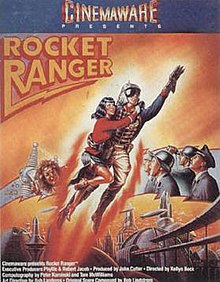
Populous is a video game developed by Bullfrog Productions and published by Electronic Arts, released originally for the Amiga in 1989, and is regarded by many as the first god game. With over four million copies sold, Populous is one of the best-selling PC games of all time.
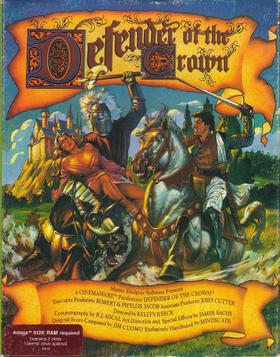
Defender of the Crown is a strategy video game designed by Kellyn Beeck. It was Cinemaware's first game, and was originally released for the Commodore Amiga in 1986, setting a new standard for graphic quality in home computer games.

UFO: Enemy Unknown, also known as X-COM: UFO Defense in North America, is a 1994 science fiction strategy video game developed by Mythos Games and MicroProse. It was published by MicroProse for DOS and Amiga computers, the Amiga CD32 console, and the PlayStation. Originally planned by Julian Gollop as a sequel to Mythos Games' 1988 Laser Squad, the game mixes real-time management simulation with turn-based tactics. The player takes the role of commander of X-COM – an international paramilitary and scientific organization secretly defending Earth from an alien invasion. Through the game, the player is tasked with issuing orders to individual X-COM troops in a series of turn-based tactical missions. At strategic scale, the player directs the research and development of new technologies, builds and expands X-COM's bases, manages the organization's finances and personnel, and monitors and responds to UFO activity.

Red Baron is a combat flight simulation video game for MS-DOS created by Damon Slye at Dynamix. It was published by Sierra On-Line in 1990. The game was ported for Amiga and Macintosh computers in 1992.

Cinemaware was a video game developer and publisher. It had released several titles in the 1980s based on various film themes. The company was resurrected in 2000, before being acquired by eGames in 2005.

Syndicate is an isometric real-time tactical and strategic game from Bullfrog Productions created in 1993, and released for a variety of platforms beginning with the PC and Commodore Amiga. It is the first title in the Syndicate series. Set in a dystopian future in which corporations have replaced governments, Syndicate puts the player in control of a corporation vying for global dominance.

It Came from the Desert is a 1989 action-adventure game by Cinemaware. It was originally released for the Amiga, but later ported to MS-DOS, as well as released in distinctly different forms to consoles. The TurboGrafx-16 release is distinctly different from the computer versions, in terms of gameplay and presentation. An expansion set Antheads: It Came from the Desert II was released in 1990.

S.D.I. is a 1986 Action-adventure game developed and published by Cinemaware. The game is set in a fictional version of the year 2017, but in a scenario where the Cold War did not end in 1991. In this timeline, both sides have somehow managed to construct space-based anti-missile defense systems. Compared with actual historical events, the scenario falls in the category of alternate history.
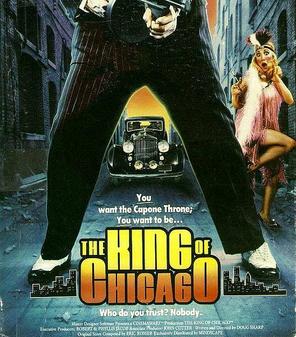
The King of Chicago is a 1986 action-adventure video game by Doug Sharp. Based on numerous Hollywood mobster movies, this game is set in the 1930s, but some sequences towards the end of the game take place in 1986. The Macintosh version of the game is animated using claymation, while other versions utilize drawn graphics.
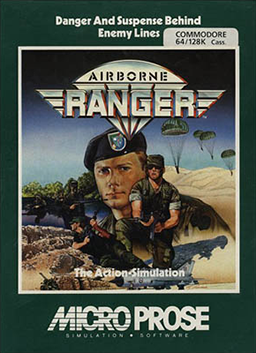
Airborne Ranger is an action game developed and published by MicroProse for the Commodore 64 and ZX Spectrum in 1987 and the Amstrad CPC and IBM PC compatibles in 1988. Ports to the Amiga and Atari ST by Imagitec Design were released in 1989. A sole U.S. Army Ranger is sent to infiltrate the enemy territory to complete various objectives. The game was followed by Special Forces in 1991.

Wings is a World War I video game developed and published by Cinemaware. It was released for the Amiga in 1990. The action sequences are similar in style to those of the 1927 silent film Wings.

Cannon Fodder 2: Once More unto the Breach, or simply Cannon Fodder 2, is an action-strategy shoot 'em up game developed by Sensible Software and published by Virgin Interactive for the Amiga and DOS in November 1994. The game is the sequel to Cannon Fodder, a successful game released for multiple formats in 1993. The game is a combination of action and strategy involving a small number of soldiers battling through a time-travel scenario. The protagonists are heavily outnumbered and easily killed. The player must rely on strategy and heavy secondary weapons to overcome enemies, their vehicles and installations.
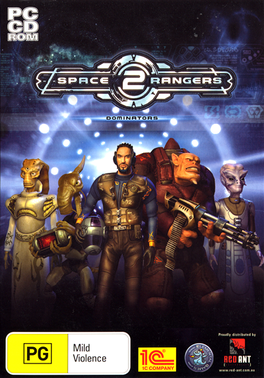
Space Rangers 2: Dominators, released in North America with the subtitle Rise of the Dominators, is a multi-genre science fiction computer game developed by Elemental Games for Windows and first published in 2004 by 1C Company. The player takes the role of a spaceship pilot, and may explore, trade, engage in space and ground-based combat, and undertake various types of missions. Space Rangers 2 is the sequel to the 2002 computer game Space Rangers.

Wings of Fury is a scrolling shooter, with some combat flight simulator elements, originally written for the Apple II by Steve Waldo and released in 1987 by Broderbund. The player assumes the role of a pilot of an American F6F Hellcat plane aboard the USS Wasp in the Pacific during World War II. It was also released in 1989 for the X68000 and in 1990 for Amstrad CPC, Commodore 64, Amiga, and MS-DOS compatible operating systems. A Game Boy Color version was published in 1999.

Arcticfox is a science fiction tank simulation video game developed by Dynamix and published by Electronic Arts in 1986. It was published in Europe by Ariolasoft. A sequel to Dynamix's Stellar 7, Arcticfox was developed for the Amiga as one of the platform's first titles but was quickly ported to other platforms including the Atari ST, Commodore 64, ZX Spectrum, MS-DOS and Apple II. A third game was released in the series in 1991 titled Nova 9: The Return of Gir Draxon.

Wolfpack is a World War II submarine simulator published by Broderbund in the 1990s, for Amiga, Atari ST, DOS, and Macintosh. It simulates combat actions between wolf packs of German U-boats and convoys of Allied destroyers and merchant vessels in the Battle of the Atlantic.
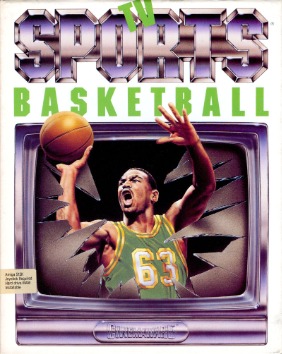
TV Sports: Basketball is a 1989 computer basketball game for the home computers. It was developed by Cinemaware and published by Mirrorsoft for the Amiga, MS-DOS, Commodore 64 and TurboGrafx-16. It is part of the TV Sports series that included TV Sports: Baseball as well as other games based on hockey and American football.

Knights of the Sky is a World War I combat flight simulator designed by Jeff Briggs and published by MicroProse in 1990 for MS-DOS. Ports to the Amiga and Atari ST followed in 1991.

Dive Bomber is a video game developed by Acme Animation in 1988 for the Commodore 64. It was ported to Atari ST, Apple II, ZX Spectrum and MS-DOS.
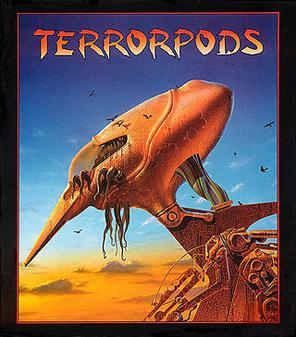
Terrorpods is a 1987 shooting game with simple business simulation by Psygnosis. Originally developed for the Amiga and Atari ST, it was later ported to the Commodore 64, ZX Spectrum, Amstrad CPC and MSX.
